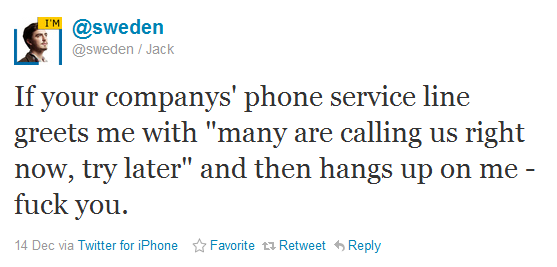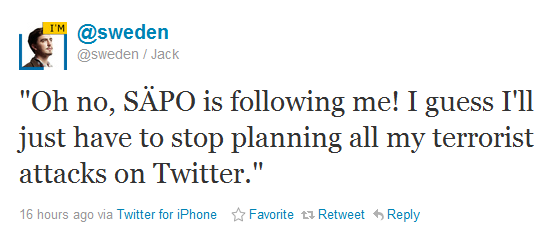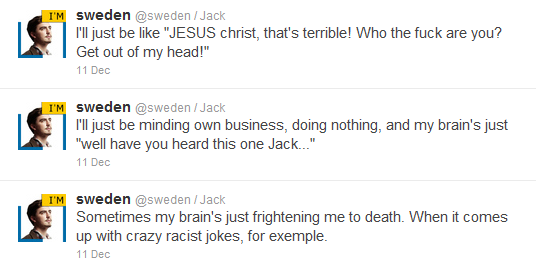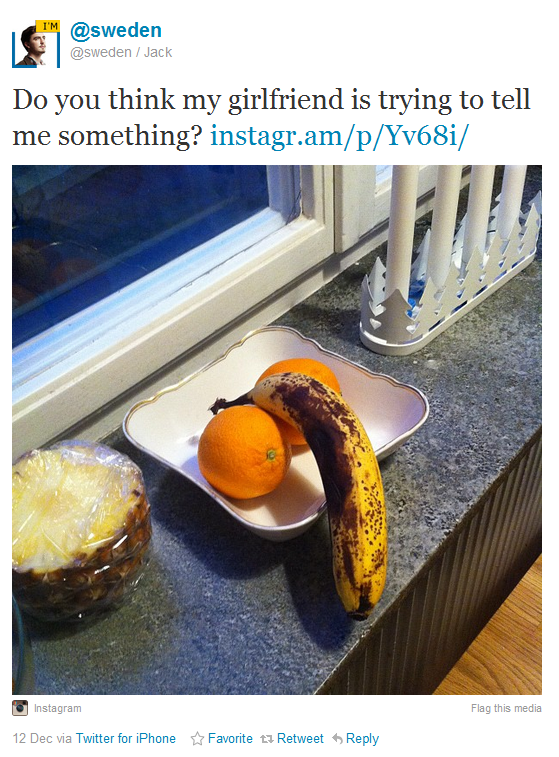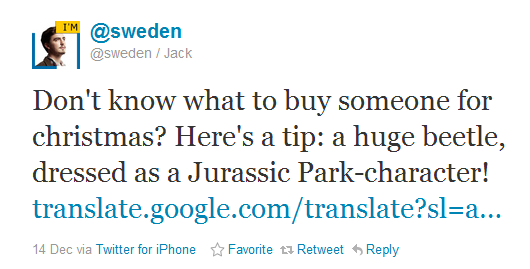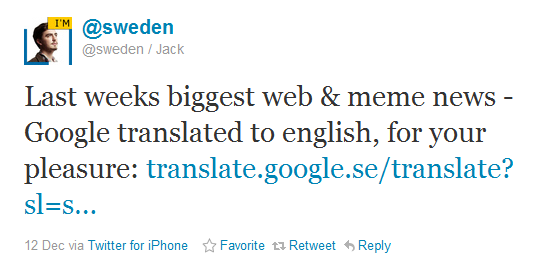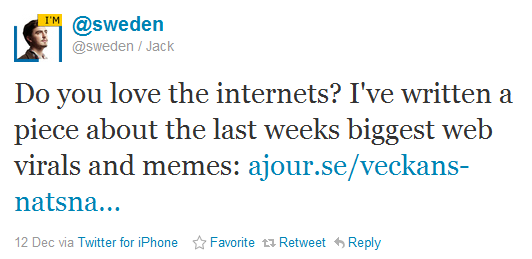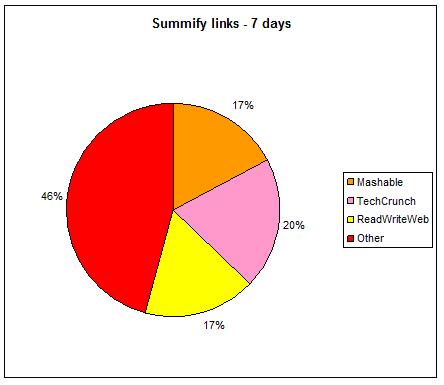What would you do if you were able to tweet on behalf of an entire country for a week? Would you recommend things to do and places to see, share opinions and ideas? Or would you use foul language, post pictures of fruit that look like genitals and post links to your own site? The former is at least the idea that one person should do for a week for Sweden’s official Twitter account @sweden, “the world’s most democratic Twitter account”.
The project Curators of Sweden is an initiative of the Swedish institute and VisitSweden. The idea is that:
“…each curator will share both their own and relevant third party’s thoughts, stories, information and other content that is somehow linked to Sweden. The idea is that the curators, through their tweets, create interest and arouse curiosity for Sweden and the wide range the country has to offer. The expectation is that the curators will paint a picture of Sweden, different to that usually obtained through traditional media.”
Now, what a brilliant idea to turn to the crowd and let ordinary Swedes share their views on Sweden. The only problem with letting go of control is that, well, you have little control. You see, there is one thing I’m not particulary impressed with in this campaign so far, and that is the actual tweeting.
The whole purpose of this activity is that the tweets should be linked to Sweden and create interest in Sweden. But I have a hard time seeing that tweets containing foul language, mentions of dreams of racist jokes or jokes about planning terrorist attacks on Twitter are what the Swedish Institute had in mind.
Or images of fruit that look like…
Then I also find it a bit unprofessional to use this opportunity to repeatedly link to your own website (in this case the news site Ajour.se).
My intention is not to pick on this tweeter. I’m not offended and I can see the humour in most of this. I also understand you must have a high tolerance for the type of content or it would run the risk of being boring. And there are plenty of links that have a Swedish connection (although many don’t). But there’s a time and place for everything, and as an observer, this is not the kind of content that I appreciate being posted on the @sweden Twitter account.
This leads me to question if the “curators of Sweden” were given any rules or guidelines and if so, what the account owners are doing to make sure these guidelines are followed. At least they articulate, in the disclaimer, that tweets may be removed, which indicates some sort of monitoring and rules.
“Si/VisitSweden do not endorse any Curator Submission or any opinion, recommendation, or advice expressed therein, and Si/VisitSweden expressly disclaims any and all liability in connection with Curator Submissions.
Si/VisitSweden reserves the right to remove Curator Submissions without prior notice.”
I really like the idea with Curators of Sweden and I hope it picks up some pace. Right now, I’m just underwhelmed.
